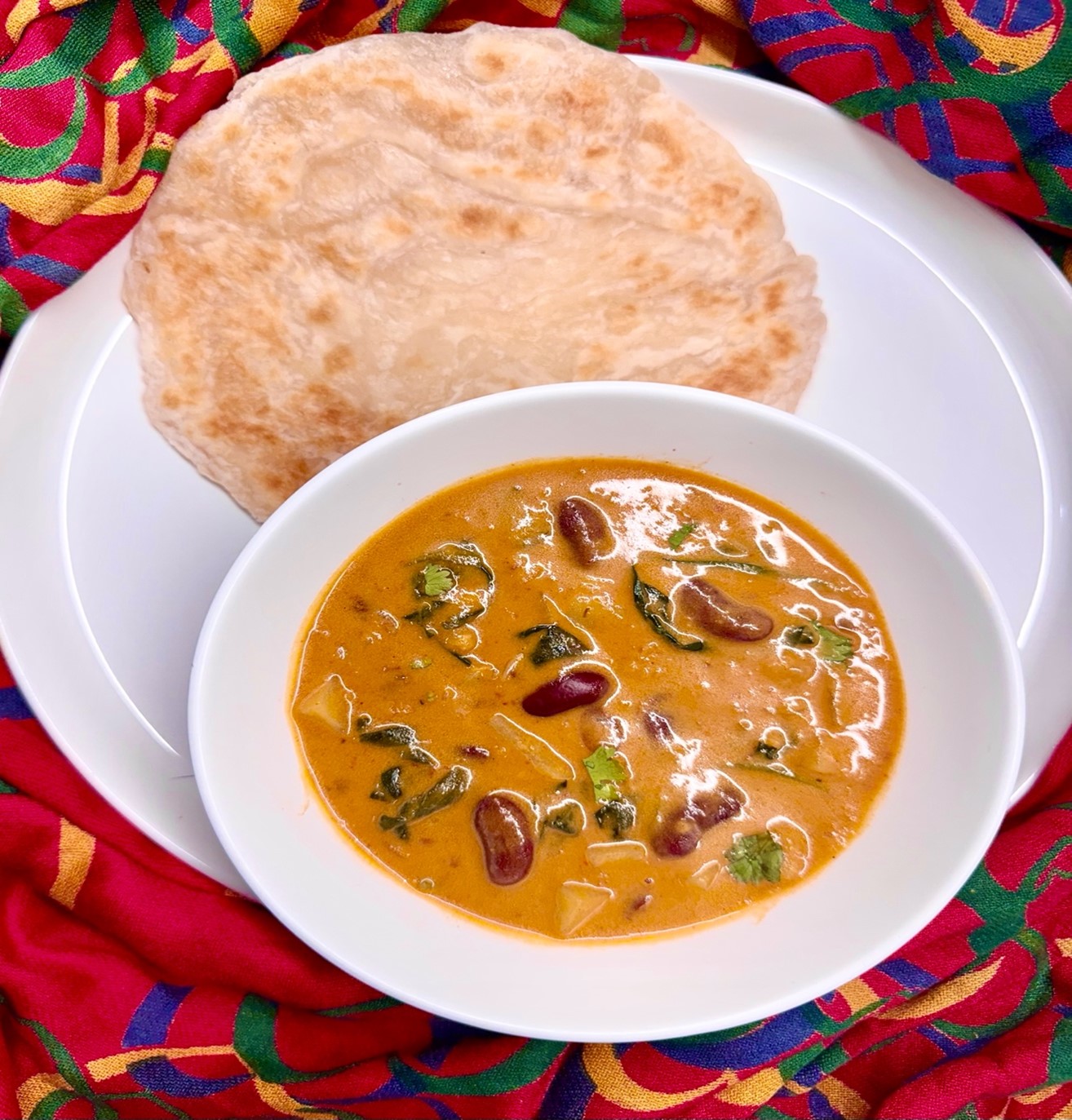
The Proven Platter – Kenya, February 2025
The recipe for this month, a rather cold February 2025, is in honor of our grantee, Kakenya’s Dream. The dream is to “invest in girls from rural Kenya through educational, health, and leadership initiatives to create agents of change.” The weather and the subject of our inspiration (Kenyan cuisine, girls being empowered…) seemed to conspire to prod me toward a stew of some kind, a stew that would warm your heart, lift your spirits, and fill you up. Enter: Maharage Ya Nazi, a kidney bean dish stewed in coconut milk. Legumes are a staple and a convenient source of protein in the region, and kidney beans in particular are available in many varieties. The dish is simply spiced with some pantry staples and comes together quickly, especially if like me, you choose to use canned beans. Variations of the dish include incorporating greens, like spinach or kale, and throwing in a starchy vegetable such as a potato or sweet potato. I decided to add some baby spinach and a potato (cubed) to it. It is typically served hot with ugali, rice, or Kenyan chapati. The Kenyan chapati (chapo) is a layered, flaky flatbread derived from its cousin, the Indian paratha. On a cold evening, the buttery, flaky chapo seemed like the way to go. For the uninitiated, the chapo is not an easy bread to fashion. A lot of rolling and coiling is involved, so if you feel like the weather dictates that you do less for more, go ahead and serve with some fragrant rice instead. The Maharage Ya Nazi is creamy from the coconut milk, tangy from the tomato paste, vegan, and essentially comfort in a bowl.
Maharage Ya Nazi
Ingredients:
1 (15 oz.) can kidney beans
1 potato, finely cubed
2 cups baby spinach
1 cup coconut milk, unsweetened
3 tablespoons tomato paste
½ onion, finely diced
4 cloves garlic, ground
¼-inch piece ginger, finely minced
¼ teaspoon turmeric
½ tablespoon coriander powder
1 teaspoon ground pepper
Salt, to taste
2 tablespoons oil
1 cup water
For Garnish:
Fresh cilantro
Equipment:
Stewpan
Method:
Add oil to the pan, set at medium heat. When the oil is hot, add the finely diced onion and sauté the onion until it turns golden brown. To the browned onions, add ginger and garlic and sauté for a few minutes – but take care to not allow to brown/burn as that would impart a bitter taste.
Add the cubed potato to the onions and sauté. Add ½ cup of water to help the potato pieces to not stick to the pan and to soften. Mix in the aromatics – turmeric, coriander, pepper, salt – and stir to combine. When the potatoes seem soft, add tomato paste and sauté for a few minutes.
Add the kidney beans and stir to combine. Add the coconut milk and water and mix. Add the spinach and stir until wilted. Taste test and add more salt if desired
Garnish with fresh cilantro and serve hot with rice or Kenyan chapati.
Kenyan Chapati (Chapo)
Ingredients:
2 ½ cups all-purpose flour
2 tablespoons oil
6 teaspoons ghee
1 teaspoon salt
1 teaspoon sugar
1 ¼ cups warm water
Flour, for dusting
Equipment:
Mixing bowl
Cloth
Rolling pin
Board/surface to roll dough
Pan
Method:
Add the flour to the bowl. Create a little “well” in the middle and add the salt, sugar, and the oil and mix together. Add the water a little at a time and knead the dough. The dough should not be sticky. Cover the dough with a cloth and let it rest for 30 minutes.
Divide the dough into 6 pieces and roll into 6 balls of dough. Dust your work area with flour. Roll a ball of dough into a circle about 5 – 6 inches in diameter. Brush with ghee.
Dust with flour and starting at the bottom, pinch pleat the dough until you reach the top. As you would with a cinnamon bun, coil the pleated dough into a tight “bun.” Set it aside and repeat with the other 5 balls of dough. Allow to rest for about 10 minutes.
Dust your work area with flour. Brush each rolled ball of dough with ghee and roll each into a circle about 5- 6 inches in diameter.
Heat a griddle. Grease with oil/ghee. Cook each side of the chapati till it is golden brown. Serve hot.
Recipe and photo credit: Vinola V. Munyon
